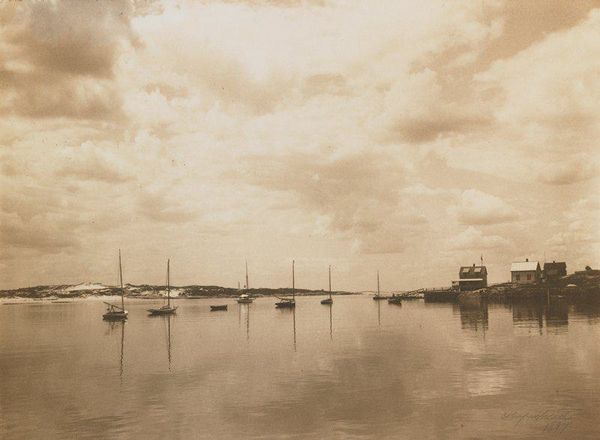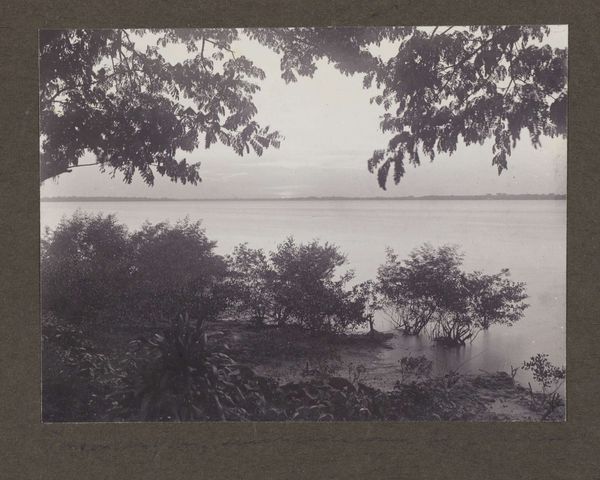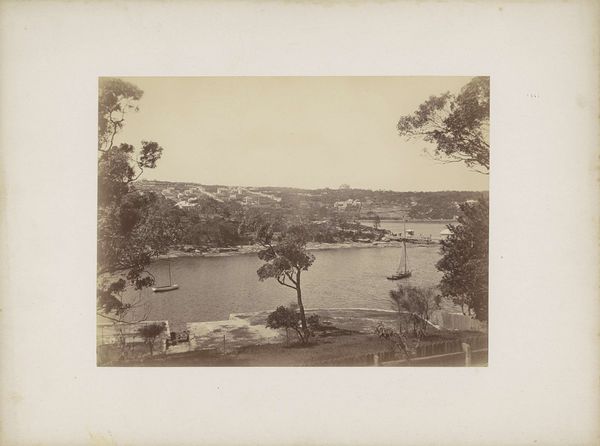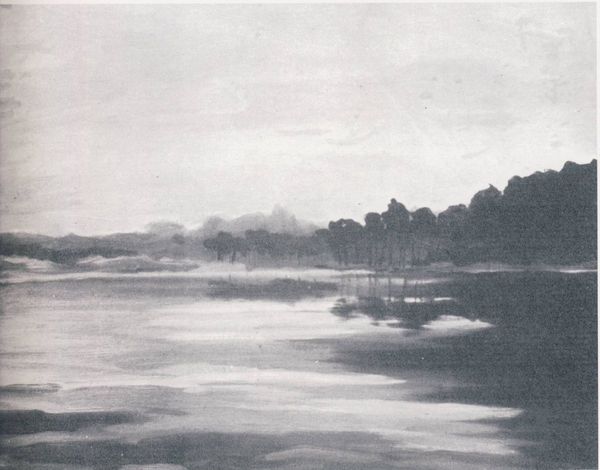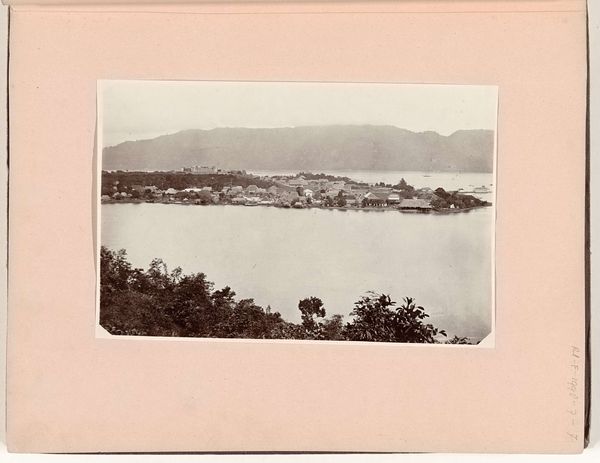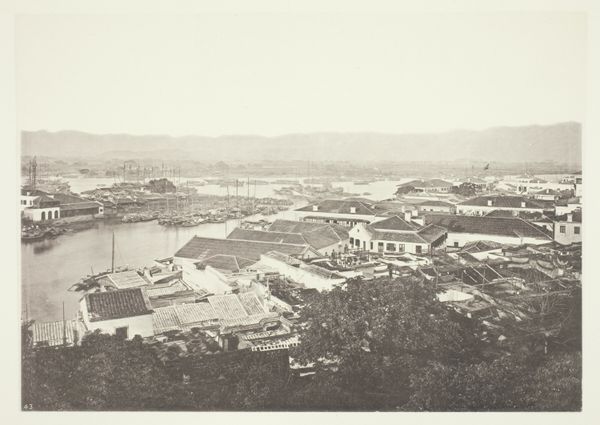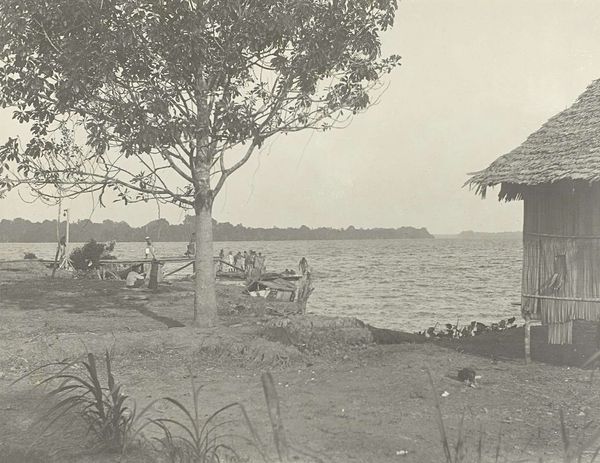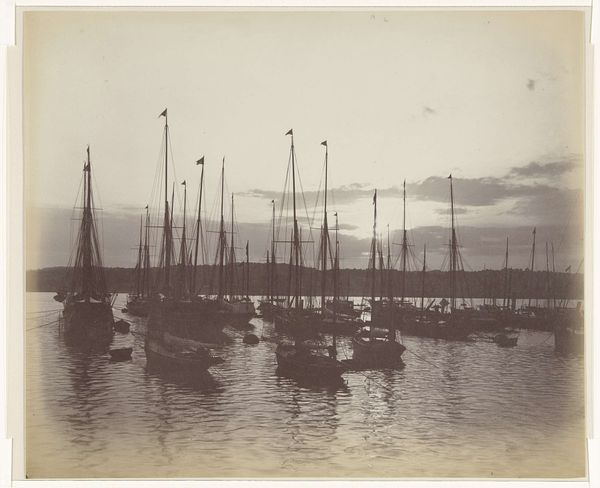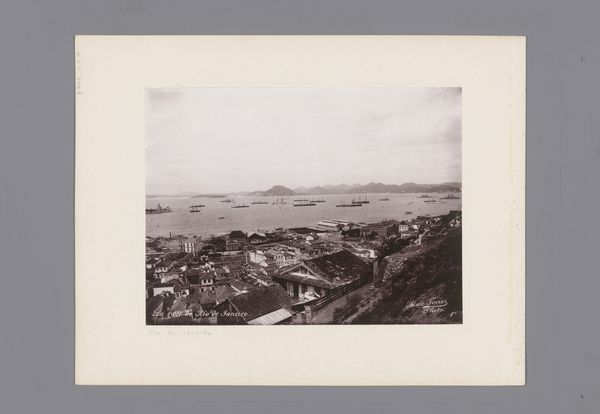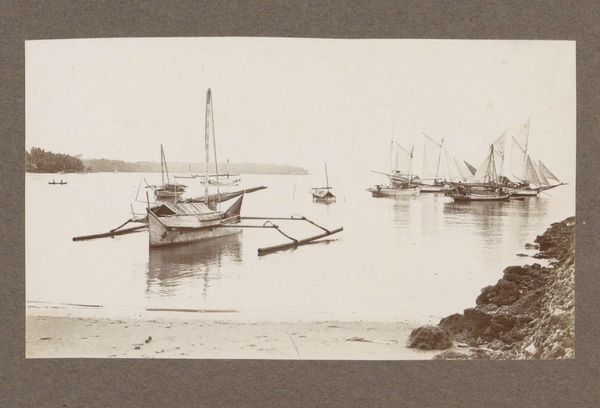
photography, albumen-print
#
16_19th-century
#
landscape
#
photography
#
orientalism
#
albumen-print
Dimensions: 13 × 28.2 cm (each image); 47.1 × 34.8 cm (album page)
Copyright: Public Domain
Editor: This albumen print, "Island of Kulangsu," taken around 1868 by John Thomson, is strikingly serene. The doubled landscape view creates a layered effect that is strangely compelling. How would you interpret its visual symbols, particularly those related to cultural exchange? Curator: This photograph resonates deeply as a crossroads, literally and figuratively. Water, islands, ships—these are all potent symbols. Water, of course, is often associated with the subconscious, with flow and change. Islands, on the other hand, suggest isolation, perhaps refuge, yet they are inevitably linked to the mainland, hinting at connection even in separation. Editor: And the ships? They seem so central. Curator: Indeed! In this context, the ships become powerful emblems of trade, exploration, and perhaps even colonial power. Their presence speaks to a collision of cultures, of the West encountering the East. Ask yourself: what kind of emotional baggage is implicit in the imagery? This wasn't a neutral exchange. Editor: So, you are saying the photograph captures more than just a scene; it evokes a complex power dynamic? Curator: Precisely. Thomson’s lens captured not just the physical beauty, but the weight of history and the unfolding of global interactions, preserving a visual memory imbued with layered meanings that still provoke thought. Editor: It’s amazing how a single image can carry so much symbolic weight. I’ll never look at landscape photography the same way again. Curator: That's the magic of visual symbols - they speak volumes where words often fall short, prompting us to consider the ongoing dialogue between images and meaning.
Comments
No comments
Be the first to comment and join the conversation on the ultimate creative platform.
